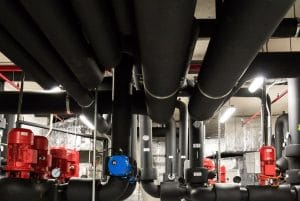 Improving productivity can be a tricky concept for companies, depending on the specific industry they’re in. In most cases, it involves investing in advanced technologies and methods of production, all while balancing that investment with the long-term costs of maintaining the new systems. When it comes to enhancing the productivity of thermal management solutions, maintaining that balance hasn’t always been simple. With more traditional systems, the most effective solutions used to mainly include air conditioning and air compressing equipment, which are often costly to maintain on a consistent basis. However, with more modern solutions such as heat exchangers to continuously transfer the waste heat, enhancing productivity has become a much more efficient process.
Improving productivity can be a tricky concept for companies, depending on the specific industry they’re in. In most cases, it involves investing in advanced technologies and methods of production, all while balancing that investment with the long-term costs of maintaining the new systems. When it comes to enhancing the productivity of thermal management solutions, maintaining that balance hasn’t always been simple. With more traditional systems, the most effective solutions used to mainly include air conditioning and air compressing equipment, which are often costly to maintain on a consistent basis. However, with more modern solutions such as heat exchangers to continuously transfer the waste heat, enhancing productivity has become a much more efficient process.
Electrical cooling and technological efficiency
The importance of electrical cooling to the efficiency of modern technology has grown exponentially as technology has advanced. Effectively cooling electrical enclosures has always been necessary to prevent them from overheating, and the more types of technology companies implement, the greater the impact those technologies have on their operations. This means the effort and energy needed to maintain those technologies and their thermal management solutions has had a greater impact on the companies’ overall efficiency and productivity, as well. Because of this, the ability to create highly efficient, high-performance electrical cooling results at minimal energy and maintenance costs has made heat exchangers an invaluable asset.
The challenges of thermal management efficiency
Before heat exchangers became one of the most popular forms of electrical cooling, companies had grown used to relying on solutions like air conditioning and air compression units to keep their electrical enclosures cooled. This reliance posed one of the earliest and most significant challenges to enhancing thermal management efficiency. By their nature, traditional cooling solutions required lots of energy to generate the chilled air they needed to combat waste heat. With the advent of heat exchangers, however, streamlining the process of thermal management and making it more productive has made way for much more efficient electrical cooling methods.
The improved productivity heat exchangers make possible
The difference between heat exchangers and more traditional electrical cooling solutions is that heat exchangers are designed to keep waste heat from accumulating within an enclosure. This doesn’t require a source of continuous chilled air, but rather an eco-friendly cooling fluid and a well-designed cooling unit through which it can transfer the waste heat. In this way, heat exchangers are able to prevent electrical overheating with vastly fewer resources, and in a more productive and efficient manner than traditional solutions can accomplish. For more information about the impacts of thermal management on overall productivity, call Noren Thermal Solutions in Taylor, TX, at 866-936-6736.







